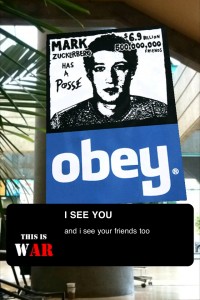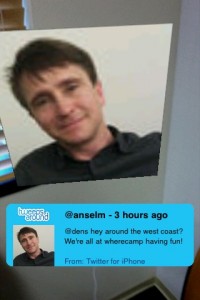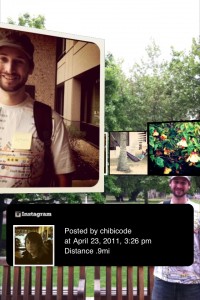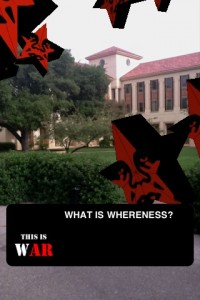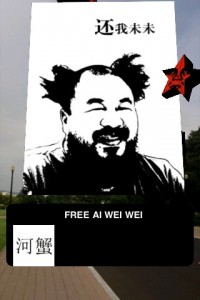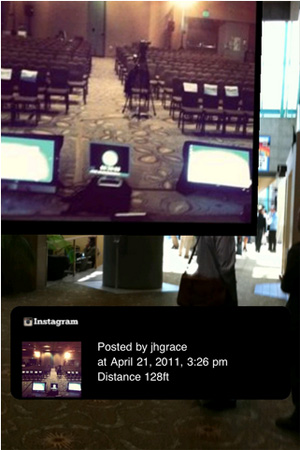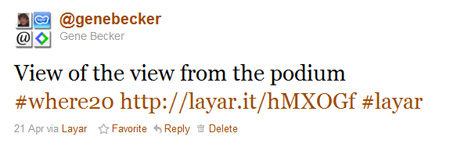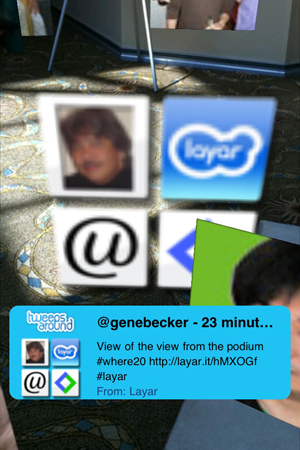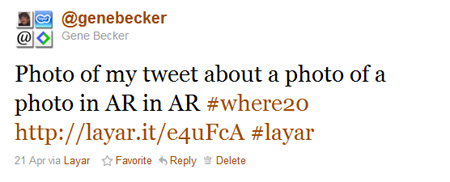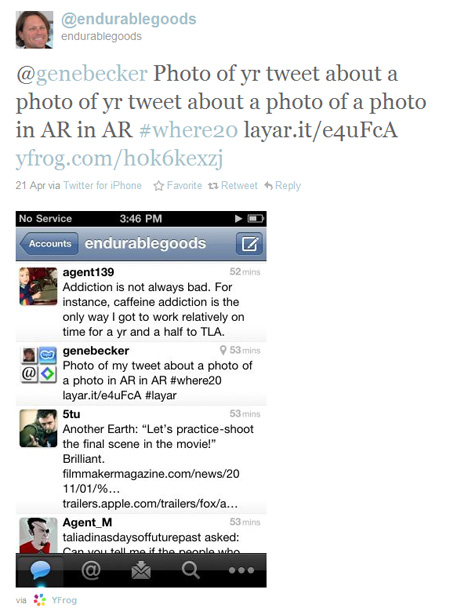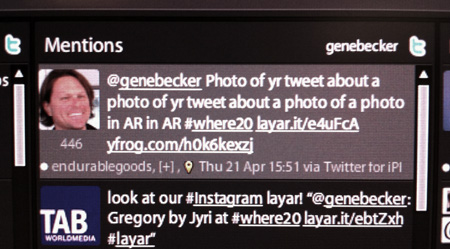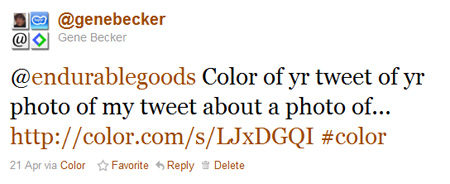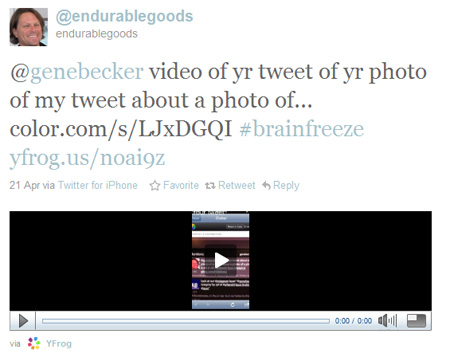Last week at Where 2.0 and Wherecamp, the air was full of AR augments. Between the locative photos in the Instagram layer, the geotagged tweets in TweepsAround, and the art/protest layer called freespace, there were many highly visual, contextually interesting AR objects being generated, occupying and flowing through the event spaces. These were invisible of course, until viewed through the AR lens. I found myself becoming very aware of this hidden dimension, wondering what new objects might have appeared, what I might encounter if I peered through the looking glass right here, right now. And then I found myself taking pictures in AR, because I was discovering moments that seemed worth capturing and sharing.
Larry and Mark weren’t physically at Where 2.0, but their perceived presence loomed large over the proceedings. Those are clever mashups on the Obey Giant theme as well; what are they trying to say here?
At Wherecamp on the Stanford campus, locative social media were very much in evidence. Here, camp organizer @anselm and AR developer @pmark were spotted in physical/digital space.
The freespace cabal apparently thought the geo community would be receptive to their work, although it seemed some of the messages were aimed at a different audience. The detention of Chinese artist Ai Wei Wei is a charged topic, certainly.
So you’ll note that although these are all screenshots from the AR view in Layar, I’m referring to them as photographs in their own right. It’s a subtle shift, but an interesting one. For me, this new perspective is driven by several factors: the emergence of visually interesting and contextually relevant AR content, the idea that AR objects are vectors for targeted messages, and the new screenshot and share functions which make Layar seem more like a social digital camera app. I’m finding myself actively composing AR photos, and thinking about what content I could create that would make good AR pictures other people would want to take. Oh, and that awkward AR holding-your-phone-up gesture? I’m taking pictures, what could be more natural?
AR photography feels like it might be important. What do you think?


